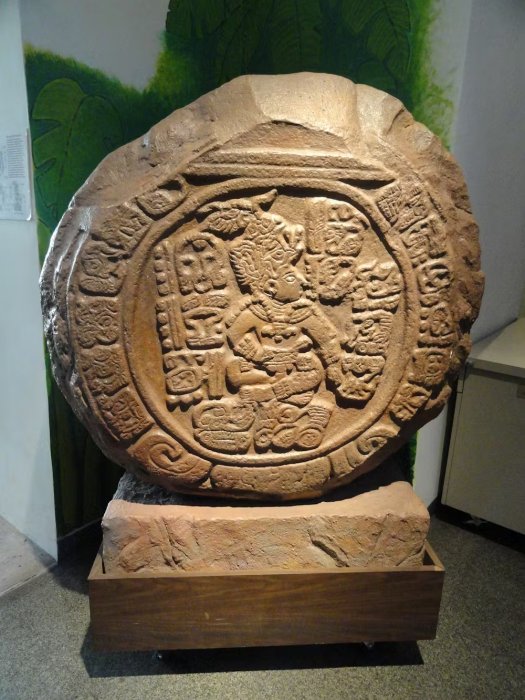Solstices Brought Mayan Communities Together, Using Monuments Shaped By Science And Religion – And Kingly Ambitions, Too
AncientPages.com - K’ahk’ Uti’ Witz’ K’awiil knew his history.
For 11 generations, the Mayan ruler’s dynasty had ruled Copan, a city-state near today’s border between Honduras and Guatemala. From the fifth century C.E. into the seventh century, scribes painted his ancestors’ genealogies into manuscripts and carved them in stone monuments throughout the city.
Credit: Adobe Stock - bird_saranyoo
Around 650, one particular piece of architectural history appears to have caught his eye.
Centuries before, village masons built special structures for public ceremonies to view the Sun – ceremonies that were temporally anchored to the solstices, like the one that will occur June 20, 2024. Building these types of architectural complexes, which archaeologists call “E-Groups,” had largely fallen out of fashion by K’ahk’ Uti’ Witz’ K’awiil’s time.
But aiming to realize his ambitious plans for his city, he seems to have found inspiration in these astronomical public spaces, as I’ve written about in my research on ancient Mayan hieroglyphically recorded astronomy.
K’ahk’ Uti’ Witz’ K’awiil’s innovations are a reminder that science changes through discovery or invention – but also occasionally for personal or political purposes, particularly in the ancient world.
Viewing the horizon
E-Groups were first constructed in the Mayan region as early as 1000 B.C.E. The site of Ceibal, on the banks of the Pasión River in central Guatemala, is one such example. There, residents built a long, plastered platform bordering the eastern edge of a large plaza. Three structures were arranged along a north-south axis atop this platform, with roofs tall enough to rise above the rainforest floral canopy.
Within the center of the plaza, to the west of the platform, they built a radially symmetric pyramid. From there, observers could follow sunrise behind and between the structures on the platform over the course of the year.
At one level, the earliest E-Group complexes served very practical purposes. In Preclassic villages where these complexes have been found, like Ceibal, populations of several hundred to a few thousand lived on “milpa” or “slash-and-burn” farming techniques practices still maintained in pueblos throughout Mesoamerica today. Farmers chop down brush vegetation, then burn it to fertilize the soil. This requires careful attention to the rainy season, which was tracked in ancient times by following the position of the rising Sun at the horizon.
Most of the sites in the Classic Mayan heartland, however, are located in flat, forested landscapes with few notable features along the horizon. Only a green sea of the floral canopy meets the eye of an observer standing on a tall pyramid.
By punctuating the horizon, the eastern structures of E-Group complexes could be used to mark the solar extremes. Sunrise behind the northernmost structure of the eastern platform would be observed on the summer solstice. Sunrise behind the southernmost structure marked the winter solstice. The equinoxes could be marked halfway between, when the Sun rose due east.
Scholars are still debating key factors of these complexes, but their religious significance is well attested. Caches of finely worked jade and ritual pottery reflect a cosmology oriented around the four cardinal directions, which may have coordinated with the E-Group’s division of the year.
Fading knowledge
K’ahk’ Uti’ Witz’ K’awiil’s citizenry, however, would have been less attuned to direct celestial observations than their ancestors.
By the seventh century, Mayan political organization had changed significantly. Copan had grown to as many as 25,000 residents, and agricultural technologies also changed to keep up. Cities of the Classic period practiced multiple forms of intensive agriculture that relied on sophisticated water management strategies, buffering the need to meticulously follow the horizon movement of the Sun.
E-Group complexes continued to be built into the Classic period, but they were no longer oriented to sunrise, and they served political or stylistic purposes rather than celestial views.
Such a development, I think, resonates today. People pay attention to the changing of the seasons, and they know when the summer solstice occurs thanks to a calendar app on their phones. But they probably don’t remember the science: how the tilt of the Earth and its path around the Sun make it appear as though the Sun itself travels north or south along the eastern horizon.
United through ritual
During the mid-seventh century, K’ahk’ Uti’ Witz’ K’awiil had developed ambitious plans for his city – and astronomy provided one opportunity to help achieve them.
He is known today for his extravagant burial chamber, exemplifying the success he eventually achieved. This tomb is located in the heart of a magnificent structure, fronted by the “Hieroglyphic Stairway”: a record of his dynasty’s history that is one of the largest single inscriptions in ancient history.
Eying opportunities to transform Copan into a regional power, K’ahk’ Uti’ Witz’ K’awiil looked for alliances beyond his local nobility, and he reached out to nearby villages.
Over the past century, several scholars, including me, have investigated the astronomical component to his plan. It appears that K’ahk’ Uti’ Witz’ K’awiil commissioned a set of stone monuments or “stelae,” positioned within the city and in the foothills of the Copan Valley, which tracked the Sun along the horizon.
A section of the ancient Maya ‘Madrid Codex,’ including information on astronomy. Andrew Dalby/Wikimedia Commons
Like E-Group complexes, these monuments engaged the public in solar observations. Taken together, the stelae created a countdown to an important calendric event, orchestrated by the Sun.
Back in the 1920s, archaeologist Sylvanus Morley noted that from Stela 12, to the east of the city, one could witness the Sun set behind Stela 10, on a foothill to the west, twice each year. Half a century later, archaeoastronomer Anthony Aveni recognized that these two sunsets defined 20-day intervals relative to the equinoxes and the zenith passage of the Sun, when shadows of vertical objects disappear. Twenty days is an important interval in the Mayan calendar and corresponds to the length of a “month” in the solar year.
Stela M and the Hieroglyphic Stairway at the archeological site of Copan. Peter Andersen/Wikimedia Commons, CC BY-SA
My own research showed that the dates on several stelae also commemorate some of these 20-day interval events. In addition, they all lead up to a once-every-20-year event called a “katun end.”
K’ahk’ Uti’ Witz’ K’awiil celebrated this katun end, setting his plans for regional hegemony in motion at Quirigua, a growing, influential city some 30 miles away. A round altar there carries an image of him, commemorating his arrival. The hieroglyphic text tells us that K’ahk’ Uti’ Witz’ K’awiil “danced” at Quirigua, cementing an alliance between the two cities.
The altar from Quirigua, displayed in the San Diego Museum of Man. Daderot/Wikimedia Commons, CC BY
In other words, K’ahk’ Uti’ Witz’ K’awiil’s “solar stelae” did more than track the Sun. The monuments brought communities together to witness astronomical events for shared cultural and religious experiences, reaching across generations.
Coming together to appreciate the natural cycles that make life on Earth possible is something that – I hope – will never fade with fashion.
Provided by The Conversation
This article is republished from The Conversation under a Creative Commons license. Read the original article.
More From Ancient Pages
-
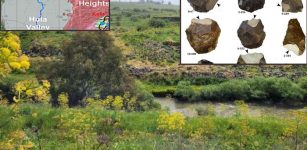 Early Humans In The Hula Valley Invested In Systematic Procurement Of Raw Materials Hundreds Of Thousands Of Years Ago
Archaeology | Jul 19, 2023
Early Humans In The Hula Valley Invested In Systematic Procurement Of Raw Materials Hundreds Of Thousands Of Years Ago
Archaeology | Jul 19, 2023 -
 Mysterious Black Cloud Caused A Global Catastrophe In 536 A.D. And 18 Months Of Darkness
Featured Stories | May 25, 2021
Mysterious Black Cloud Caused A Global Catastrophe In 536 A.D. And 18 Months Of Darkness
Featured Stories | May 25, 2021 -
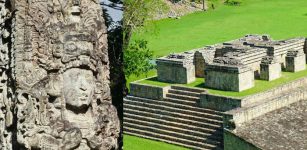 Secret Behind Ancient Durable Maya Plaster Discovered
Archaeology | Apr 21, 2023
Secret Behind Ancient Durable Maya Plaster Discovered
Archaeology | Apr 21, 2023 -
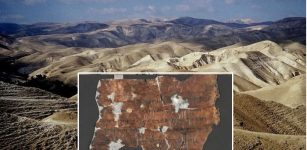 Intriguing Ancient ‘Horoscope’ Scroll Found In The Judean Desert
Artifacts | Apr 2, 2024
Intriguing Ancient ‘Horoscope’ Scroll Found In The Judean Desert
Artifacts | Apr 2, 2024 -
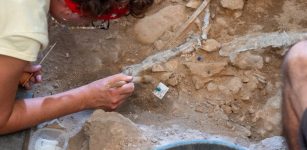 3D Models Used To Study Linya, The Prehistoric Woman Who Lived 14,000 Years Ago In Pyrenean Foothills
Archaeology | Aug 5, 2023
3D Models Used To Study Linya, The Prehistoric Woman Who Lived 14,000 Years Ago In Pyrenean Foothills
Archaeology | Aug 5, 2023 -
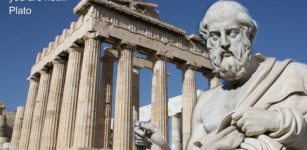 Famous Philosopher Plato: One The Greatest Thinkers Of All Time And His Concept Of Soul
Featured Stories | Jun 25, 2018
Famous Philosopher Plato: One The Greatest Thinkers Of All Time And His Concept Of Soul
Featured Stories | Jun 25, 2018 -
 Ancient Feneos excavations: defensive walls, five towers, sanctuary unearthed
Civilizations | Aug 23, 2015
Ancient Feneos excavations: defensive walls, five towers, sanctuary unearthed
Civilizations | Aug 23, 2015 -
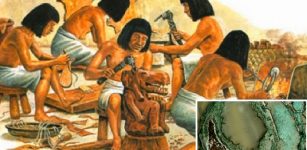 What Ancient Civilization Discovered Metallurgy?
Ancient Technology | Sep 19, 2017
What Ancient Civilization Discovered Metallurgy?
Ancient Technology | Sep 19, 2017 -
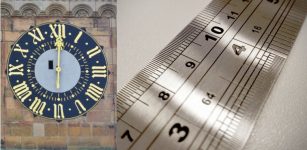 Why Did We Abandon Roman Numerals?
Ancient History Facts | Apr 25, 2019
Why Did We Abandon Roman Numerals?
Ancient History Facts | Apr 25, 2019 -
 10 Types Of Ancient Crosses In Different Cultures Explained
Featured Stories | May 23, 2017
10 Types Of Ancient Crosses In Different Cultures Explained
Featured Stories | May 23, 2017 -
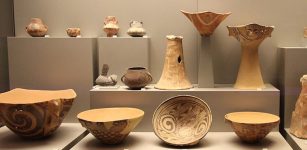 How Did Hunter-Gatherers Spread Knowledge Of Pottery Vast Distances Over A Short Period Of Time?
Archaeology | Dec 28, 2022
How Did Hunter-Gatherers Spread Knowledge Of Pottery Vast Distances Over A Short Period Of Time?
Archaeology | Dec 28, 2022 -
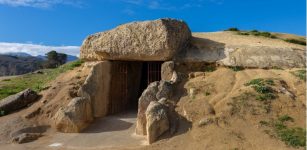 Why Is The Mysterious Menga Dolmen One Of The Greatest Neolithic Engineering Achievements?
Archaeology | Dec 6, 2023
Why Is The Mysterious Menga Dolmen One Of The Greatest Neolithic Engineering Achievements?
Archaeology | Dec 6, 2023 -
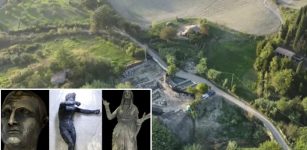 Incredible 2,300-Year-Old Roman-Etruscan Time Capsule Opened In San Casciano dei Bagni, Italy
Featured Stories | Dec 20, 2023
Incredible 2,300-Year-Old Roman-Etruscan Time Capsule Opened In San Casciano dei Bagni, Italy
Featured Stories | Dec 20, 2023 -
 Could Neanderthals Meditate? Scientists Investigate
Archaeology | Jun 30, 2022
Could Neanderthals Meditate? Scientists Investigate
Archaeology | Jun 30, 2022 -
 Unexplained Phenomenon In Ancient Ireland – When Legends, Science And Real Events Collide
Ancient Mysteries | Apr 19, 2018
Unexplained Phenomenon In Ancient Ireland – When Legends, Science And Real Events Collide
Ancient Mysteries | Apr 19, 2018 -
 Hnefatafl: Ancient Viking Board Game “King’s Table” Popular In Medieval Scandinavia
Ancient History Facts | Mar 20, 2016
Hnefatafl: Ancient Viking Board Game “King’s Table” Popular In Medieval Scandinavia
Ancient History Facts | Mar 20, 2016 -
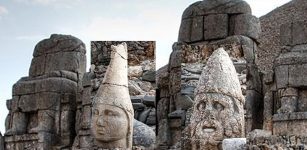 Mount Nemrut: ‘Throne Of The Gods’ – Mysterious Royal Tomb Surrounded By Gigantic Sculptures
Civilizations | Nov 16, 2018
Mount Nemrut: ‘Throne Of The Gods’ – Mysterious Royal Tomb Surrounded By Gigantic Sculptures
Civilizations | Nov 16, 2018 -
 Decoding The Mysterious Medieval Pearl Manuscript
Linguistic Discoveries | Mar 26, 2025
Decoding The Mysterious Medieval Pearl Manuscript
Linguistic Discoveries | Mar 26, 2025 -
 On This Day In History: Battle Of Naulochus Was Fought Off The Coast Of Sicily – On Sep 3, 36 BC
News | Sep 3, 2015
On This Day In History: Battle Of Naulochus Was Fought Off The Coast Of Sicily – On Sep 3, 36 BC
News | Sep 3, 2015 -
 Pharos Of Alexandria – One Of The First Lighthouses In The Ancient World
Featured Stories | Sep 1, 2015
Pharos Of Alexandria – One Of The First Lighthouses In The Ancient World
Featured Stories | Sep 1, 2015




